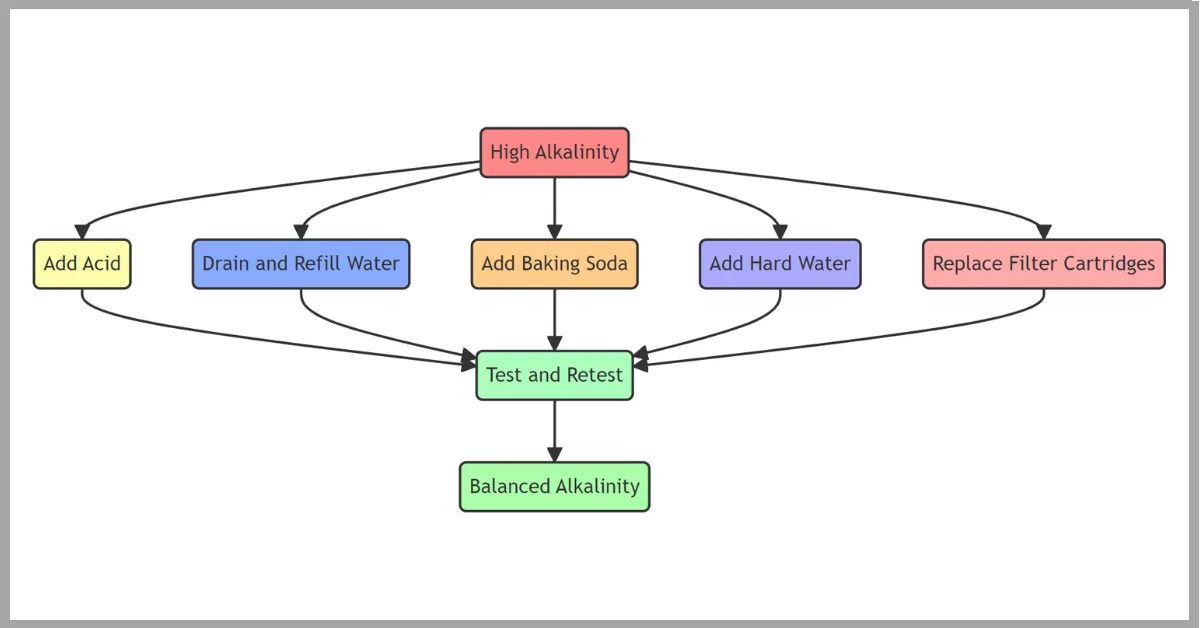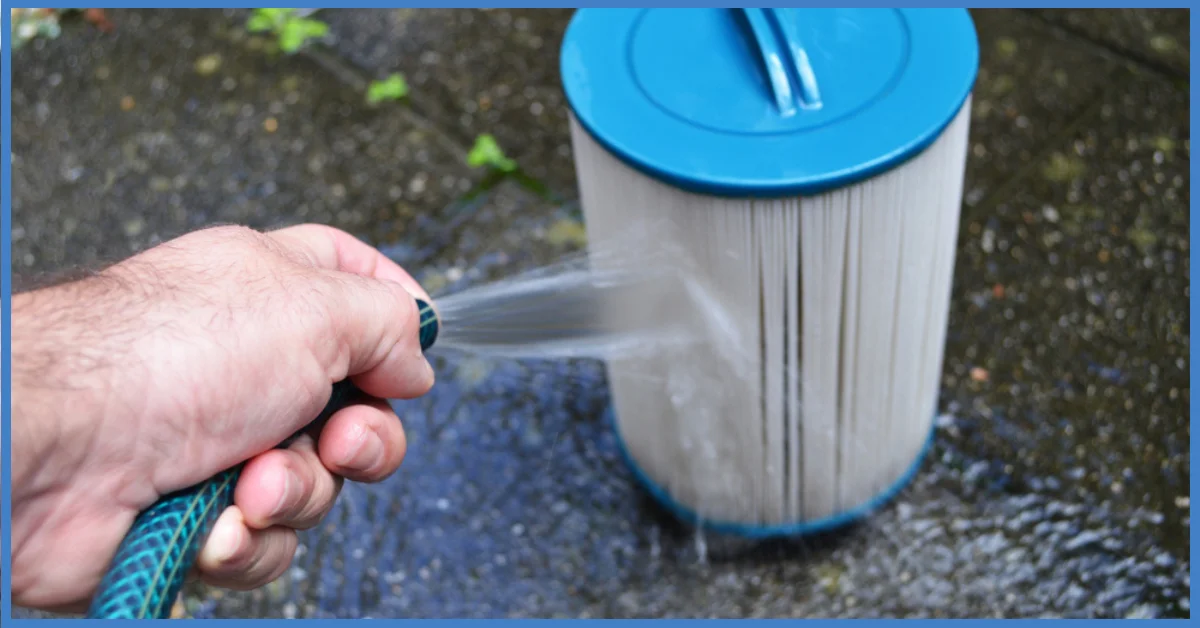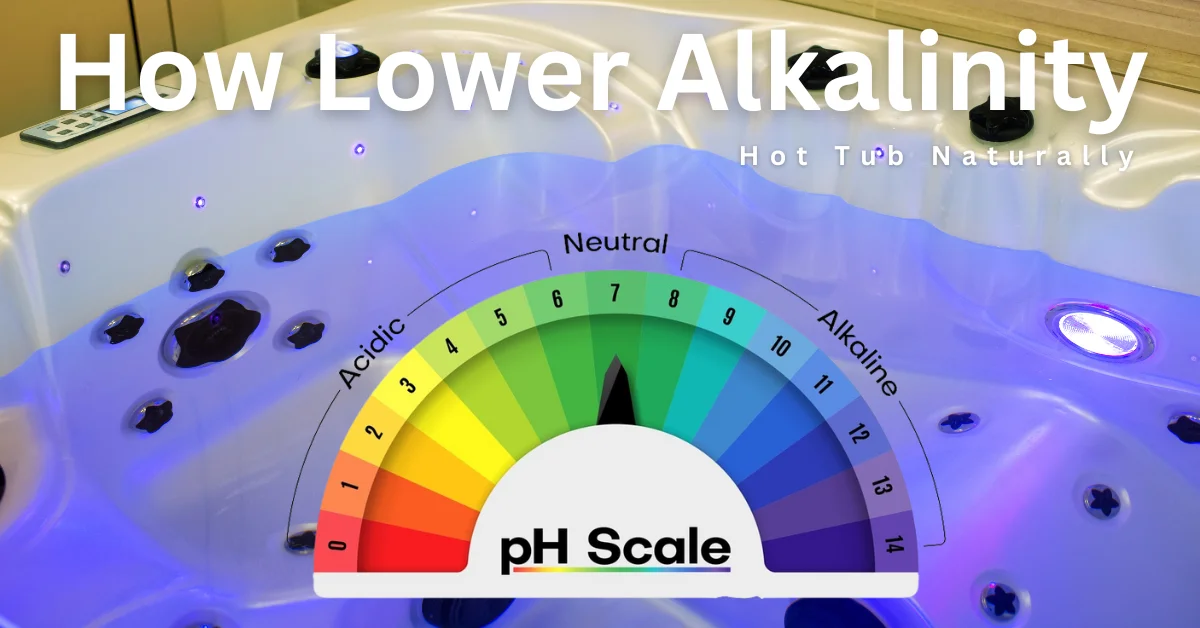5 Easy Ways How to Lower Alkalinity in a Hot Tub Naturally
Learn 5 easy, natural methods to lower high alkalinity in your hot tub without harsh chemicals. Use citric Acid, baking soda, hard water, and filter changes to safely reduce alkalinity. Follow these steps to balance your tub’s levels for a soothing soak.
How to Lower Alkalinity in a Hot Tub Naturally
I have been enjoying hot tub soaks for years. While checking my tub’s pH and alkalinity levels, I noticed the alkalinity was consistently high. I wanted to find natural ways to lower it without using harsh chemicals.
Understanding Alkalinity
- What it is: Total alkalinity (TA) measures the water’s ability to resist changes in pH. High alkalinity makes your hot tub’s pH hard to control, leading to issues.
- Why it matters: Maintaining proper TA is crucial for:
- Clear water: High TA can cause cloudiness.
- Sanitizer effectiveness: Extreme pH fluctuations reduce the effectiveness of chlorine or bromine. Preventing scaling: High TA can lead to calcium buildup on surfaces. Comfort: High TA water can irritate your skin and eyes.

Five Natural Methods to Lower Alkalinity
1. Add Acid
Adding acid to the hot tub water is the most direct way to lower alkalinity. I use citric Acid, a mild organic acid derived from citrus fruits. It effectively reduces total alkalinity without drastically altering pH.
Start by adding 1/4 cup citric acid. Test the alkalinity level the next day and add more Acid, if needed, in 1/4 cup increments. This allows you to slowly adjust levels.
2. Partially Drain and Refill
Draining some of the existing hot tub water and replacing it with fresh water is easy to dilute the alkalinity.
Aim to drain and refill 10-25% of the total water volume. The freshwater you add will have lower alkalinity, reducing the overall level.
[wps_youtube url=”https://youtu.be/ViH5GH6kyHU” responsive=”yes” autoplay=”no”]
3. Use Baking Soda
While baking soda is often used to raise alkalinity, it can also lower alkalinity sparingly. Add only 1-2 tablespoons of baking soda at a time.
Baking soda will raise pH levels, lowering carbonate alkalinity. Test regularly and add tiny amounts until you reach the desired alkalinity.
4. Add Hard Water
Hard water has low alkalinity due to higher levels of calcium and magnesium ions. Add a small amount of hard water to your tub to decrease alkalinity.
Start with 2-3 gallons and test after a few hours. Add more hard water in small increments as needed.

5. Change Filter Cartridges
If your tub’s filter cartridges are old, change them out. Soaked cartridges can leach minerals and other substances that increase alkalinity.
New cartridges will remove more alkalinity from the water each time it circulates. Use this in combination with the other methods for best results.
[wps_alert type=”success”]This is an alert—check it out![/wps_alert]
Important Considerations:
- Test frequently: Monitor alkalinity and pH with test strips or a kit. Adjust gradually as needed.
- Safety: Use food-grade vinegar or lemon juice.
- Patience: Natural methods may take slightly longer than chemical reducers.
[wps_youtube url=”https://youtu.be/Ewe17WU5MTc” responsive=”yes” autoplay=”no”]
What are some natural ways to reduce alkalinity in a hot tub?
- Vinegar:
- How it works: The acetic acid in distilled white vinegar helps neutralize alkalinity, lowering its levels.
- Method: Start with ½ cup of vinegar per 100 gallons of water. With the hot tub circulating, add it slowly near a return jet. Retest after a few hours and add more gradually if needed.
- Lemon Juice:
- How it works: Similar to vinegar, the citric acid in lemon juice lowers alkalinity.
- Method: Consider diluting lemon juice before adding to avoid potential residue. Use a similar approach to adding vinegar.
- Aeration:
- How it works: Increasing aeration with jets and air blowers releases carbon dioxide from the water. This raises the pH, which can indirectly help lower alkalinity over time.
- Method: Run jets and any air features on high for extended periods.
Important Notes:
- Food-grade only: Always use food-grade vinegar or lemon juice.
- Start small: Begin with smaller amounts and adjust gradually.
- Frequent testing: Monitor both alkalinity and pH regularly using test strips or a kit.
- Not instant: Natural methods might be slightly slower than commercial alkalinity reducers.
Why Choose Natural Alternatives?
- Less harsh on equipment: Some commercial alkalinity reducers can be slightly corrosive to hot tub components.
- Gentler on skin: Ideal if you have sensitive skin and find traditional chemicals irritating.
- Cost and accessibility: Vinegar and lemon juice are widely available and affordable.
Things to Keep in Mind:
- Frequent adjustments: Natural options might require more frequent monitoring and adjustments of your water chemistry.
- Testing is key: Regularly test both pH and alkalinity levels to ensure proper balance.
My hot tub water is cloudy, and I suspect high alkalinity. How can I lower it naturally to fix the cloudiness?
Step 1: Confirm the Culprit
- Test your water: Use test strips or a testing kit to measure both alkalinity and pH levels. Ideal ranges are:
- Total Alkalinity: 80-120 ppm
- pH: 7.4-7.6
- If your alkalinity is above 120 ppm, it’s likely the reason behind the cloudiness.
Step 2: Natural Solutions
- Vinegar:
- Start with ½ cup of distilled white vinegar per 100 gallons of hot tub water.
- With pumps running, add the vinegar slowly near a return jet.
- Retest your water after a few hours. If alkalinity is still high, add more vinegar gradually.
- Lemon Juice:
- Use a similar approach as vinegar, but consider diluting lemon juice to avoid residue.
- Aeration:
- Run your jets and air blowers on high for extended periods. This helps to release carbon dioxide, potentially lowering alkalinity indirectly.
My sanitizer doesn’t seem to be working well in my hot tub. Is high alkalinity a possible culprit, and how can I fix it naturally?
How Alkalinity Affects Sanitizers:
- pH Interference: High alkalinity makes it difficult to keep your hot tub’s pH within the optimal range (7.4-7.6). When pH is too high, sanitizers become significantly less effective at killing bacteria and contaminants.
- Reduces Active Sanitizer: High alkalinity reduces the amount of the active form of your sanitizer (hypochlorous acid for chlorine), making it less able to do its job.
Natural Solutions:
- Lower Alkalinity First:
- Vinegar: Add ½ cup of distilled white vinegar per 100 gallons of water. Retest and repeat gradually until alkalinity lowers.
- Lemon Juice: Use similarly to vinegar, consider diluting to avoid residue.
- Adjust pH: Once alkalinity is in the proper range, use a pH decreaser (if needed) to bring your pH down to 7.4-7.6.
- Shock the Hot Tub: Add a non-chlorine shock (potassium peroxymonosulfate) to help clear the water and give your sanitizer a fresh start.
I’m worried about scaling in my hot tub. Can I prevent it by lowering alkalinity naturally?
The Connection Between Alkalinity and Scaling
- High alkalinity = More scale risk: When alkalinity is too high, it increases the likelihood of calcium carbonate scaling. This forms the hard, white deposits on your hot tub surfaces.
- How it works: High alkalinity makes the water more saturated with calcium, leading to precipitation when conditions change (temperature drops, pH rises).
Natural Ways to Prevent Scaling
- Maintain Proper Alkalinity:
- Aim for a total alkalinity (TA) between 80-120 ppm.
- Test regularly and use vinegar or lemon juice to lower TA when needed.
- Balance pH:
- Keep your pH between 7.4-7.6 to further reduce scaling potential.
- Aeration:
- Running jets and air blowers helps outgas carbon dioxide, which can slightly lower alkalinity over time and raise pH.
- Additional Considerations:
- Hardness: If your water source has high calcium hardness, consider additional measures like a scale inhibitor.
- Regular Cleaning: Helps remove potential buildup sites for scale.
[wps_alert type=”primary”]Important Note: While lowering alkalinity naturally is crucial, it might not completely eliminate scaling risk, especially if you have very hard water.[/wps_alert]
Closing Remarks:
Proper alkalinity is crucial for a safe, enjoyable hot tub experience. While commercial products can quickly adjust alkalinity, they often contain harsh chemicals. With some trial and error using natural methods like citric Acid, baking soda, and water dilution, you can gently bring your alkalinity into balance.
Test the water frequently, make minor adjustments, and be patient. In most cases, you can reduce alkalinity without disruptive pH swings or damage to the tub. Achieving the optimal range will allow sanitisers to work correctly, prevent scale buildup, and create a soothing soak for all users.
For more tips, check out my in-depth hot tub maintenance guide. I welcome any questions and success stories in the comments below! Let me know if these natural alkalinity reduction methods work for your hot tub.
Let me know if you have any other helpful tips for reducing hot tub alkalinity naturally!












